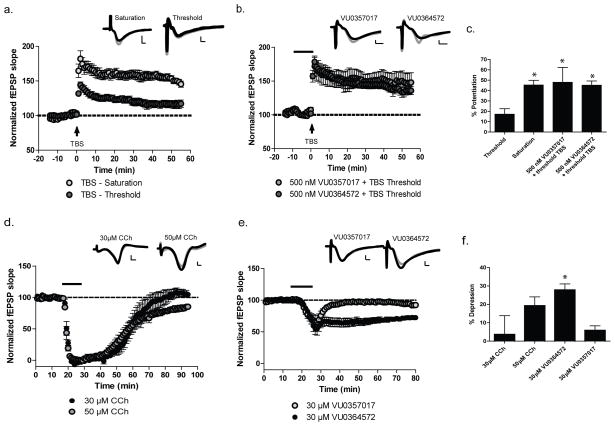Figure 5. M1 agonists VU0364572 and VU0357017 significantly enhance threshold Θ-burst LTP and VU0364572 induces LTD at the Schaffer collateral-CA1 synapse of rodent hippocampal slices.
Insets for each figure are representative fEPSP traces measured at baseline (black) or 50 (LTD) or 55 (LTP) minutes after compound washout (gray). Scale bars are x-axis = 2ms, y-axis = 0.6mV. (a.) The standard TBS protocol (TBS-saturation) induces significant LTP (n=9) whereas the threshold TBS protocol induces only a slight potentiation of fEPSP slope (n=8) at the SC-CA1 synapse. (b.) Bath application of 500 nM VU0364572 (n=5) or VU0357017 (n=5 out of 9 experiments) for 10 minutes prior to threshold TBS induced a significant potentiation of fEPSP slope. (c.) Significant differences (P < 0.01) were observed in the mean percent potentiation induced by threshold TBS compared to TBS-saturation, or TBS-threshold plus compound. (d.) Addition of 50 μM (n=5) CCh for 10 minutes induced LTD of fEPSP slope whereas addition of 30 μM CCh (n=4) had no effect. (e.) Bath application of 30 μM VU0364572 (n=6) for 10 minutes induced LTD, whereas addition of 30 μM VU0357017 (n=6) had no effect on LTD. (f.) Mean percent maximal depression induced by each compound. VU0364572 induced a significant depression in fEPSP slope compared to 30 μM CCh.

